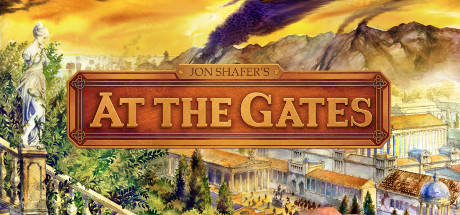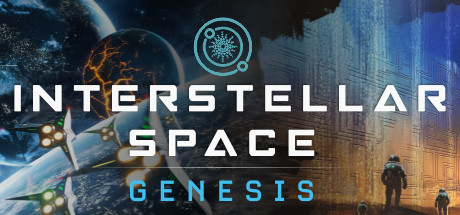How to Price a Video Game?
Jul 19, 2021You’ll get most out of this guide if you’re keen to learn more about pricing a video game and are open to mixing data with intuition.
Finding the right price for a game can make a huge impact to the game’s financial success. This article is a guide for indie developers on how to think about pricing and how to use the VG Insights pricing tool to help and find the right price for your game.
At the end of this article, you’ll be in a much better place to choose the right price for your game.
This article covers:
- Basics of pricing – Importance of pricing and framework for thinking about it.
- Benchmarking – Selecting the right group of games to compare against.
- Finding the right price – Finding the right level of quality to compare against.
- Confirming your selected price – Looking at individual games at your selected range to confirm the pricing.
Simple Pricing Framework
Pricing decision is all about price elasticity. If you double your price, will you lose more or less than half of potential buyers?
The aim of setting the right price is to maximise the revenue potential of the game in the long run. This means considering the implications to the game’s sales, but also things like building the highest potential audience for your next game.
The key equation to keep in mind the simple revenue calculation.
Price x Units Sold = Total Gross Revenue
For example, say a developer considers a price point between $9.99 and $19.99. Would more than half the people that’d buy the game at the lower price not buy It at a higher price?
This is the most important part of pricing decision making. However, this equation becomes a lot more complex if you consider the impact of building a community on the future games developed.
Advanced Pricing Framework
No game developer who wants to make a career out of gamesmithing is going to think they’ll only ever make 1 game. Therefore, it makes sense to consider the impact of pricing on your follow-up games. You’re building an audience and a brand.
Below examples have set up some fictional scenarios showing how considering the impact of building a ‘fanbase’ can impact your choice of price for the first game.
Example:
Scenario 1: Selling 1,000 games at $20 = $20,000 in gross sales
Scenario 2: Selling 1,800 games at $10 = $18,000 in gross sales
Scenario 1 is preferable to scenario 2 in confinement and you’d rather lose some sales, because the total revenue is higher.
That changes if you expect some of these buyers to become your fans and buy your next game as well.
Continued example:
Scenario 1: Selling 1,000 games at $20 = $20,000 in gross sales
In this scenario, 20% of the players also buy your second game.
1,000 * 20% * $20 = $4,000
Total sales = $20,000 + $4,000 = $24,000
Scenario 2: Selling 1,800 games at $10 = $18,000 in gross sales
20% of the players also buy your second game and you can now charge a higher price for it.
1,800 * 20% * $20 = $7,200
Total sales = $15,000 + $6,000 = $25,200
In this case, scenario 2 is actually more appealing. Of course, these assumptions can be tweaked to make the scenarios work in any way. There is no one answer to fit all games.
In reality, both low price and high quantity and high price and lower quantity are valid strategies, but the whole marketing strategy has to be consistent with the choice made.
Rules of thumb to simple pricing decisions
It’s hard to estimate the impact of price to sales without any existing sales data. In fact, it’s nearly impossible. There are some easy steps developers can take to understand what other similar games have priced their games at, how successful these have been and, therefore, what the right price to consider is for their game.
Steps to choosing a right price for a video game:
- Median price for similar games – is the typical game of that sub-genre more in the $5-10 range or $20-25 range? This is a good starting point when thinking about pricing
- Pricing distribution – For similar games, are they usually clustering around certain price points?
If the median price is $14.99, does this mean most games are around that price or do you have 2 clusters around $9.99 and $19.99?
Which cluster could your game fit to? - Impact of going with the flow VS pricing differently – For some game types, it might make sense to try and stand out with pricing. You don’t want to be one of thousands of 2D platformers priced $4.99.
At the same time, pricing wildly outside of typical games of that type might have a negative impact. If grand strategy games are typically priced at $19.99 and your game is $9.99 to stand out, it might signal poor quality to potential buyers. - Quality control – Once you’ve chosen a price, have a look at other games at that price point, especially in the same sub-genre. Do these have similar quality to your game? If not, should you consider another pricing point?
Benchmarking other similar games
To start answering the questions above, you need to first find the right set of games to compare to.
VG Insights Pricing Tool looks at all paid Steam games with at least 1,000 units sold that were released in the last 3 years. This removes the ‘shovelware’ or low quality games. It also only looks at more recent games to get an accurate view of today’s pricing.
From there, a developer is free to choose if the game they’re making is single or multiplayer, if they self-publish it and what sub-genre the game is in.
In the example below, a developer is making a single player self-published indie 4x game.

There are 29 games like that released in the last 3 years that have sold at least 1,000 units.
Finding the right price for your game
The median price for a game like this is $17.99 – much higher than the overall average of $10 in the market. This is a good starting point.

Looking at the individual games, only the smaller games with less success have priced under $10, so that’s our floor price.

Only 1 game is above $29.99, so that’s our ceiling.

The decision in the $10-$30 range comes down to the quality and expectations of our game then.
If we’re making a lower end 4x game with a quicker development time, $11.99 might make sense.
If it’s a more refined game competing at the higher end, there’s little reason to price it below $24.99.
Confirming your price range
Say you’re making a higher end game with 3-4 people and a couple of years of development. You’ll therefore consider the $29.99 price point (is anyone really going to not buy it at $29.99, but would at $24.99?)
Let’s look at other games at that price point. Do they compare to yours?
Jon Shafer’s At the Gates

VGI link: https://vginsights.com/game/241000
Steam link: https://store.steampowered.com/app/241000/Jon_Shafers_At_the_Gates/
Units sold: 11-27k
It’s a beautiful game with a high focus on the explore, expand, exploit and less for the exterminate. That being said, the reviews are very mixed and it does seem to never have made it out of the ‘early access’ feel.
Yet, it’s sold over 10k copies. Not bad. Maybe it’s because of the more known developer behind it. Maybe it’s because people crave for 4x games and will pay for anything that has a potential to be good. Promising figures though. And sounds like the quality of the game can be easily beaten by a dedicated team.
Interstellar Space: Genesis

VGI link: https://vginsights.com/game/984680
Steam link: https://store.steampowered.com/app/984680/Interstellar_Space_Genesis/
Units sold: 10-27k
Making a 4x space game? This is your benchmark. Very similar success to At the Gates in terms of units sold, but with a less known developer team and a much higher rating (85% positive). It’s made by a 2 person team over many years.
Imperiums: Greek Wars

VGI link: https://vginsights.com/game/1183470
Steam link: https://store.steampowered.com/app/1183470/Imperiums_Greek_Wars/
Units sold: 3-11k
Another game with very high ratings that’s only been around for a year, but already sold between 3-11k units. It’s made by a small team in Czechia.
Summary
We’ve decided to go down a more refined 4x game path.
We’ve priced the game at $29.99.
We know that other small indie teams have done this before and all seen at least a moderate level of success.
We’ve been able to confirm out price hypothesis pretty definitively. This might not be the case for all sub-genres. There might be more variability and more more intricate strategies to consider.
You could always reach out to the developers of these games and ask if they would choose a different price retrospectively.
VG insights offers indie developers an extensive platform covering all of your data needs from pricing, revenue estimates, competitive research and finding a publisher.
Read more articles and explore more of the platform and tools! You can also always reach out to us if you have any questions or just want to chat about games business at karl@vginsights.com